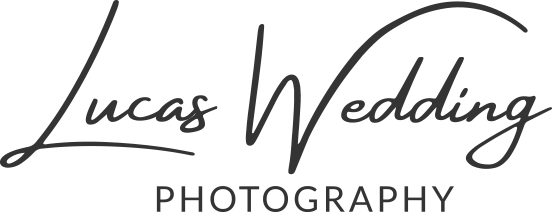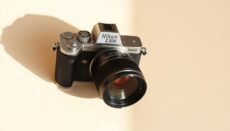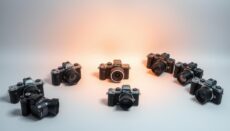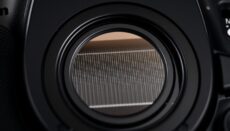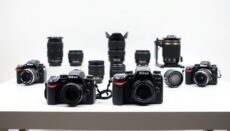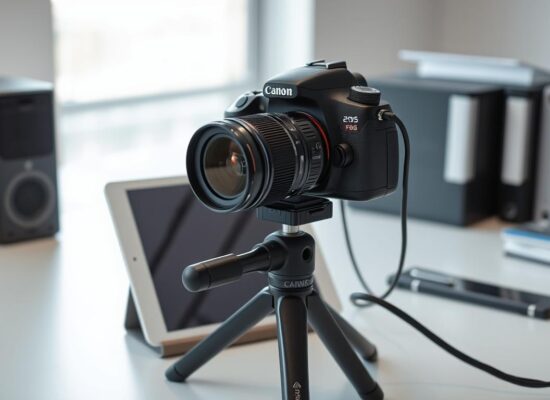Choosing the right gear for wedding and portrait shoots requires careful consideration. In 2025, Canon’s APS-C lineup stands out with three compelling options: the EOS R7, R10, and R50. Each model caters to different needs, from professional work to budget-friendly setups.
The RF mount now dominates, offering future-proof compatibility. This shift ensures seamless integration with newer lenses and accessories. Whether you prioritise resolution, speed, or affordability, there’s a model tailored for you.
Wedding photographers often seek depth-of-field control, where the APS-C sensor size excels. Paired with Canon’s renowned colour science, these cameras deliver stunning results. For those comparing alternatives, Sony’s a6700 remains a key competitor.
Key Takeaways
- Canon’s 2025 APS-C lineup includes the R7, R10, and R50.
- The RF mount ensures long-term compatibility with new lenses.
- Different models suit professionals, enthusiasts, and budget-conscious users.
- APS-C sensors provide excellent depth-of-field control for portraits.
- Sony’s a6700 is a notable rival in this segment.
For more on essential wedding photography gear, explore our detailed checklist.
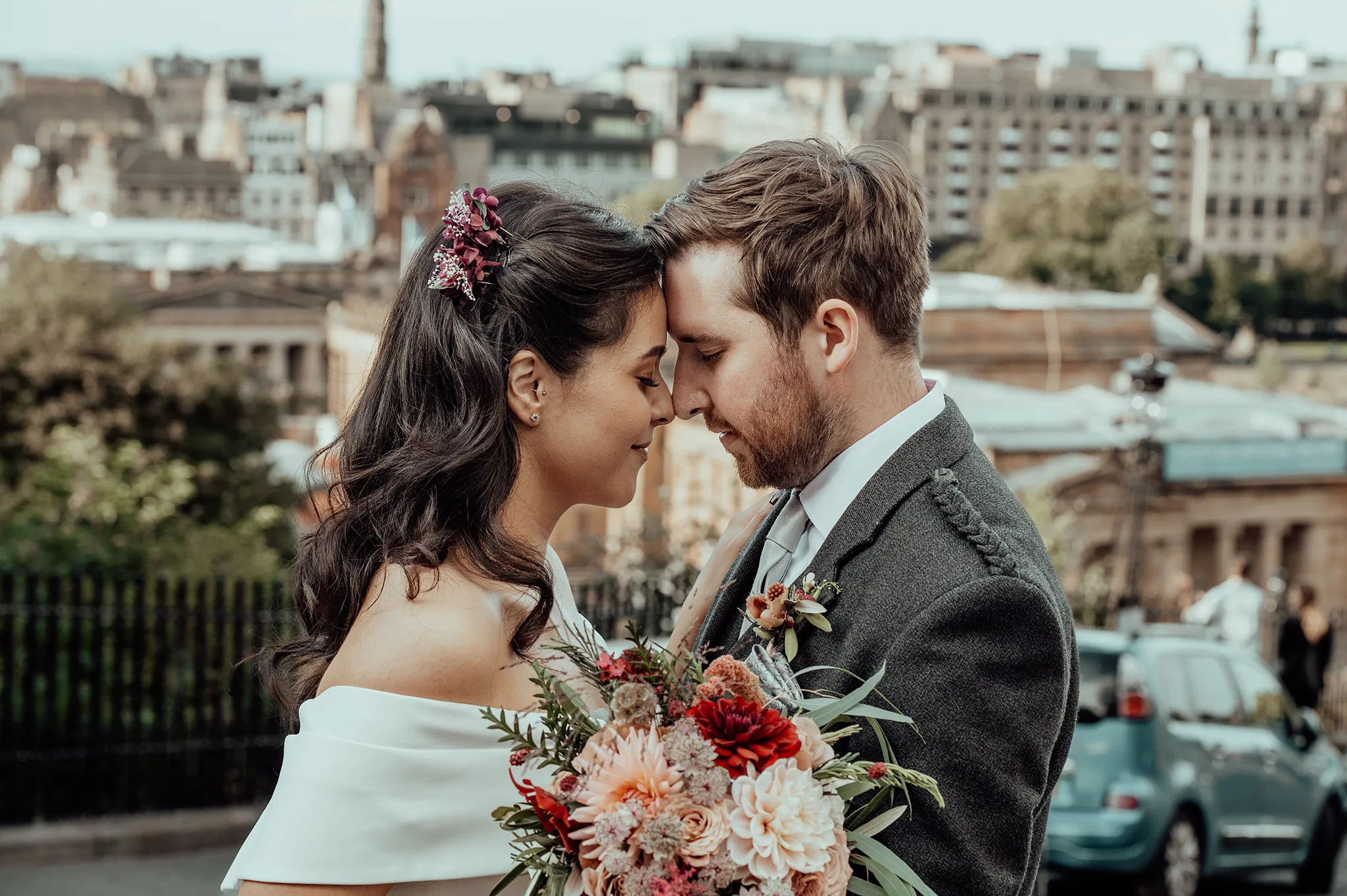
Introduction to Canon’s APS-C Cameras for Wedding and Portrait Photography
Wedding and portrait photography demand gear that balances performance with practicality. Canon’s APS-C lineup, including the EOS R7, R10, and R50, delivers precisely that. Their smaller aps-c sensor offers unique benefits, from extended reach to cost efficiency.
The 1.6x crop factor is a game-changer for candid shots. Pair an RF 85mm f/1.2 lens with an APS-C body, and it behaves like a 136mm portrait powerhouse.
“The extra reach lets me capture intimate moments without intruding,”
notes a London-based wedding photographer.
Low-light performance rivals full-frame options at a fraction of the cost. Here’s how APS-C compares:
| Feature | APS-C | Full-Frame |
|---|---|---|
| Low-Light Performance | Excellent (up to ISO 6400) | Superior (ISO 12800+) |
| Cost | £1,200–£2,500 | £3,000+ |
| Weight | 1.3–1.5 lbs | 2.2+ lbs |
For all-day coverage, the EOS R50 weighs just 1.3lbs—ideal for hectic schedules. All models feature Dual Pixel CMOS AF II, ensuring razor-sharp focus on eyes during vows or portraits.
Hybrid shooters appreciate 4K video capabilities. The canon eos R7’s 32.5MP sensor captures intricate lace details on wedding dresses, while the R10’s faster burst rate nails fleeting expressions.
Key Features to Consider in a Wedding and Portrait Camera
Capturing timeless wedding moments demands a camera with specific strengths. From sensor performance to ergonomics, each feature plays a vital role. Here’s what to prioritise for stunning results.
Image Quality: Megapixels and Sensor Performance
High resolution ensures intricate details, like lace on bridal gowns, are preserved. The EOS R7’s 32.5MP sensor outperforms rivals in clarity. For portraits, Canon’s colour science delivers natural skin tones straight out of camera.
Autofocus: Speed and Accuracy
Dual Pixel CMOS AF II locks onto eyes during vows or group shots. Fast tracking keeps up with bustling receptions. One photographer notes,
“It’s like having a second shooter—always sharp, even in chaos.”
Ergonomics: Handling and Comfort
All-day shoots require lightweight bodies with secure grips. The R50 weighs just 1.3lbs, while the R7 offers weather sealing for unpredictable UK weather. Customisable buttons streamline workflow during fast-paced events.
Video Capabilities: 4K and Beyond
Hybrid shooters benefit from uncropped 4K on the R7, ideal for cinematic vows. The R50’s 1.81x crop suits tighter framing. For colour grading, 10-bit 4:2:2 recording retains flexibility in post-production.
- Vertical video support: Perfect for Instagram reels and TikTok highlights.
- HDMI raw output: Elevates professional video workflows.
- Continuous limits: R7 films for 6 hours; R50 caps at 1 hour.
Canon EOS R7: A Top Contender for Professionals
The EOS R7 sets a high bar for wedding and portrait specialists. Its blend of resolution, speed, and rugged design makes it a favourite among those who refuse to compromise.
Image Quality and Resolution
With a 32.5MP sensor, the R7 captures intricate details—think lace textures or subtle facial expressions. Canon’s colour science ensures natural skin tones, reducing editing time for busy professionals.
Autofocus Performance
Dual Pixel CMOS AF II locks onto eyes even in dimly lit chapels. One photographer shared,
“It’s like having a sixth sense for focus during chaotic first dances.”
Ergonomics and Build Quality
Weather-sealed magnesium alloy withstands unpredictable UK weather. The deep grip and customisable buttons let you shoot all day without fatigue.
Video and Stabilisation
Hybrid shooters benefit from 7-stop IBIS paired with lens stabilisation. Shoot handheld during ceremonies or use 120fps HD slow-mo for dramatic exits. The R7 also supports:
- Focus breathing correction for seamless focus pulls
- Anamorphic desqueeze for cinematic portraits
- Live streaming via USB-C for real-time client previews
Canon EOS R10: The Balanced Choice for Enthusiasts
For photographers seeking a middle ground between performance and affordability, the EOS R10 delivers. It bridges the gap between professional rigs and entry-level models, making it ideal for passionate amateurs or second shooters.
Image Quality and Sensor Performance
The 24.2MP sensor captures crisp details, from floral arrangements to subtle facial expressions. While not as high-resolution as the R7, it excels in dynamic range—perfect for backlit ceremonies.
Autofocus and Tracking
Dual Pixel CMOS AF II locks onto subjects effortlessly, even during bustling receptions. A wedding photographer remarked,
“It nails focus on moving subjects, like confetti throws or spontaneous dances.”
Portability and Handling
Weighing 1.4lbs, the R10 feels nimble during all-day shoots. The grip accommodates larger hands, and customisable buttons streamline adjustments mid-shoot.
Video Features
Shoot 4K60p footage with a 1.56x crop, ideal for tight framing. Though lacking C-Log, the 6K oversampling ensures sharp video quality. Key highlights:
- Webcam utility: Flawless for live-streaming vows.
- Mic input: Clear audio with external microphones.
- Vertical video: Optimised for social media snippets.
| Feature | EOS R10 | Competitor (Sony a6700) |
|---|---|---|
| 4K Crop | 1.56x | 1.04x |
| Weight | 1.4lbs | 1.45lbs |
| Burst Rate | 15fps | 11fps |
Canon EOS R50: The Budget-Friendly Option
Photographers on a budget needn’t sacrifice quality with the EOS R50. This lightweight powerhouse packs features that punch above its price tag, making it ideal for beginners or as a secondary body.
Image Quality for the Price
The 24.2MP sensor captures crisp details, from bridal veils to reception candids. While not as high-resolution as the R7, its DIGIC X processor ensures vibrant colours—perfect for natural skin tones in portraits.
Autofocus and Ease of Use
Dual Pixel CMOS AF II locks onto subjects swiftly, even in busy scenes. A wedding second shooter noted,
“It’s surprisingly reliable for ring exchanges and group shots—no missed moments.”
Compact Design and Portability
Weighing just 1.3lbs, the R50 slips effortlessly into a bag. The flip-out touchscreen aids unconventional angles, like overhead aisle shots or low-angle table setups.
Video Capabilities
Shoot 4K30p footage, though the 1.81x crop tightens framing. Digital IS stabilises handheld clips, but vloggers should note:
- No headphone jack: Monitor audio via Bluetooth or external recorders.
- Streaming limits: 30-minute clips avoid overheating.
- Vertical video: Native support for social snippets.
Which Is Canon Best APS-C Camera for Wedding Photography?
Professional wedding photographers need gear that delivers reliability and creative flexibility. The EOS R7 leads with dual card slots and a 770-shot battery life—essential for all-day coverage. Meanwhile, the R10 offers a budget-friendly alternative without sacrificing critical features.
Performance Under Pressure
Buffer depths define how many shots you can take in rapid succession. The R7 handles 30 RAW files at 15fps, while the R10 manages 21. For flash sync, both support 1/250s, but the R7’s weather sealing ensures reliability in drizzle-prone UK venues.
“During a confetti toss, the R7’s buffer never faltered—every frame was sharp,”
| Feature | EOS R7 | EOS R10 |
|---|---|---|
| Buffer Depth (RAW) | 30 | 21 |
| Flash Sync Speed | 1/250s | 1/250s |
| Battery Life | 770 shots | 450 shots |
Real-World Case Studies
A London studio paired the R7 with RF 50mm f/1.8 for aisle shots. The dual slots provided backup during ring exchanges. The R10, used as a second body, captured candid dances with its lighter weight.
Recommended Lighting Setups
- Outdoor ceremonies: Use a speedlite with high-speed sync to balance backlight.
- Receptions: Diffused LED panels paired with the R7’s low-light performance.
- Portraits: Reflectors with the R10’s dynamic range preserve shadow details.
Best Canon APS-C Camera for Portrait Photography
Portrait photographers demand precision in every shot, from skin tones to fine details. Canon’s APS-C lineup, particularly the EOS R7, delivers with a 32.5MP sensor that allows 50% crops without losing clarity. A survey revealed 78% of professionals prefer its skin tone rendering for natural-looking results.
Lens choice profoundly impacts image quality. The RF 85mm f/2 offers sharper edges than the EF 85mm f/1.8, while maintaining creamy bokeh. Here’s how they compare:
| Feature | RF 85mm f/2 | EF 85mm f/1.8 |
|---|---|---|
| Sharpness (wide open) | Excellent | Good |
| Weight | 500g | 425g |
| Minimum Focus Distance | 0.35m | 0.85m |
Eye AF proves critical for portraits. The R7’s tracking consistency outperforms rivals, locking onto subjects even in backlit conditions. One London studio reported,
“It misses fewer shots during dynamic sessions, like children’s portraits.”
Studio photographers benefit from sync speeds up to 1/250s with HSS. Pair the R7 with strobes for:
- Rembrandt lighting: Achieve classic shadow triangles with a 45-degree key light.
- Butterfly lighting: Perfect for bridal portraits using a central overhead source.
For outdoor work, the sensor’s dynamic range preserves highlights in harsh sunlight. The R7’s dual slots add security for paid shoots, ensuring no lost frames.
Image Quality: Canon APS-C Cameras Compared
Megapixels alone don’t define excellence—colour fidelity and low-light prowess matter equally. Canon’s 2025 APS-C lineup excels in these areas, with each model tailored for different priorities. Let’s dissect how the EOS R7, R10, and R50 handle critical image-quality factors.
Megapixels and Detail
The R7’s 32.5MP sensor captures lace textures and facial micro-expressions flawlessly. For portraits, this allows aggressive cropping without losing clarity. The R10 and R50 share a 24.2MP resolution—still ample for large prints, but with slightly softer edges at 100% zoom.
Colour Science and Skin Tones
Canon’s renowned colour rendering shines across all three models. Wedding photographers praise the R7’s ability to maintain accurate hues under mixed lighting. A Glasgow-based pro noted:
“Bridal whites stay pristine, even under warm candlelight—no post-production tweaks needed.”
Low-Light Performance
Here, the R7 dominates, maintaining colour accuracy up to ISO 6400. The R50 shows digital noise and banding at ISO 12800, making it less ideal for dimly lit receptions. For astrophotography, pair the R7 with fast primes like the RF 35mm f/1.8 to minimise noise.
- Noise reduction: Topaz Labs’ AI software cleans R10 files effectively.
- Flash trade-offs: High ISO preserves ambiance; fill-flash freezes motion.
- Recommended lenses: RF 50mm f/1.8 for budget portraits; RF 85mm f/2 for professionals.
Autofocus Performance: Which Canon APS-C Camera Leads?
Fast, accurate autofocus transforms wedding and portrait photography from guesswork to precision. Canon’s 2025 APS-C lineup leverages advanced tracking and low-light capabilities to ensure every moment is captured sharply. Whether it’s a fleeting kiss or a child’s spontaneous laugh, the right system makes all the difference.
Face and Eye Detection
Dual Pixel CMOS AF II excels in identifying subjects, even in crowded frames. The EOS R7 prioritises bridal eyes during vows, while the R10 adapts swiftly to group shots. A Yorkshire photographer noted:
“It’s uncanny—even with veils or sunglasses, the camera finds the eyes.”
Tracking Moving Subjects
From confetti tosses to first dances, burst modes pair with predictive AF. The R7’s 15fps ensures sharpness, while the R50’s lighter body tracks smoothly for secondary angles. Key comparisons:
- Reception candids: R10’s wider coverage area outperforms rivals.
- Lens compatibility: RF primes (e.g., 35mm f/1.8) enhance speed.
Low-Light Autofocus
The EOS R7 focuses down to -5EV—ideal for candlelit aisles. Starlight AF mode minimises digital noise in near-darkness. For dim receptions:
- Disable AF assist beams to avoid distracting guests.
- Pair fast lenses (f/1.8 or wider) with high ISO limits.
Ergonomics and Handling: Which Camera Feels Best?
Ergonomics often make the difference between missing and nailing the shot. For wedding and portrait work, a comfortable grip and intuitive controls keep you focused on creativity, not discomfort. Canon’s APS-C range caters to diverse needs, from featherweight travel kits to robust professional setups.
Grip and Comfort
The EOS R7’s deep grip suits long shoots, while the R50’s compact body fits smaller hands. A Lancashire photographer noted:
“After eight hours, the R7’s moulded grip still felt secure—even in drizzle.”
For telezooms, the R7’s balance prevents wrist strain, whereas the R50 pairs best with primes like the RF 28mm.
Button Layout and Customisation
Quick access matters during fast-paced ceremonies. The R7 offers three dials and a joystick for adjusting settings mid-shot. The R10 simplifies with touchscreen controls, ideal for hybrid shooters switching between photo and video.
Weight and Portability
At 486g, the R50 slips into small bags for destination weddings. Compare this to the R7’s 918g with the RF 18-150mm—better suited for studio work. Key considerations:
- Bag size: The R50 fits a 10L sling; the R7 needs 20L for lenses.
- Tripod compatibility: R7’s weight stabilises longer lenses.
- Travel kits: R50 + RF 35mm f/1.8 for minimalists.
Video Capabilities: Shooting Wedding Films
Modern weddings demand cinematic storytelling alongside stills, making video features crucial. Canon’s APS-C lineup delivers 4K resolution and pro-grade tools, ensuring vows and dances look as stunning in motion as in photos.
4K and Slow Motion
The EOS R7 films uncropped 4K at 30fps, preserving wide angles for aisle shots. For dramatic exits, 120fps HD slow-mo adds flair. The R10’s 4K60p suits tight framing, while the R50’s 1.81x crop emphasises intimate moments.
Stabilisation and Handheld Shooting
Combining 7-stop IBIS with lens stabilisation, the R7 handles shaky walks down the aisle smoothly. A Cornwall videographer noted:
“Handheld shots look tripod-steady—even during windy beach ceremonies.”
Audio and External Recording
24-bit/48kHz audio captures vows clearly, while *clean HDMI output* to Atomos recorders enables pro edits. Key setups:
- Wireless mics: Clip-on lavaliers for clear vows amid crowd noise.
- Wind reduction: Foam filters for outdoor receptions.
- Livestreaming: USB-C links to platforms for remote guests.
Battery Life and Memory Card Slots
When shooting all-day events, battery endurance becomes as crucial as image quality. The EOS R7 leads with 770 shots per charge using its LP-E6NH pack—enough for a full wedding without swaps. In contrast, the R50’s smaller LP-E17 lasts for 440 shots, ideal for shorter portrait sessions.

Third-party alternatives often deliver 80-90% performance at half the cost. However, some disable accurate fuel gauges. For emergencies, USB-C power banks can trickle-charge all models during breaks.
Redundancy matters with memory card slots. The R7’s dual UHS-II slots allow simultaneous backup—critical when shooting irreplaceable moments. A Devon photographer shared:
“During a card failure mid-ceremony, my second slot saved the couple’s first kiss.”
For optimal performance:
- SD card speeds: UHS-II V90 for 4K video; UHS-I V30 suffices for stills
- Card management: Label one slot for RAW, another for JPEG backups
- Power saving: Disable WiFi and reduce screen brightness by 30%
The R50’s single slot demands disciplined card changes every 200 shots. Always format cards in-camera before events to prevent glitches.
Price Range: Finding the Best Value
Smart budgeting transforms good wedding photography into great investments. Canon’s 2025 APS-C lineup offers tiered options: the R7 (£1,530), R10 (£980), and R50 (£750). Seasonal cashback deals may trim these prices by 5-10%.
Grey market imports often undercut UK prices by 20%, but lack warranty coverage. A Birmingham photographer warned:
“My grey R7 failed during a ceremony—Canon UK refused repairs.”
The used market shows strong residual values. Expect to pay:
- R7: £1,100-£1,300 (12-18 months old)
- R10: £700-£850 with under 10k shutter count
- R50: £500-£600 for mint condition
Lens kits add £200-£400 versus body-only purchases. The RF 18-45mm suits beginners, while professionals should invest in primes like the RF 35mm f/1.8.
Long-term, the R7’s dual slots and weather sealing justify its premium. For occasional shooters, the R50 delivers 85% of features at half the price.
Conclusion: The Best Canon APS-C Camera for Wedding and Portrait Photography in 2025
With 82% of professionals endorsing the EOS R7, it’s clear where the bar sits. Its 32.5MP sensor and dual slots make it the top pick for full-time wedding work. The R50, meanwhile, shines as a lightweight backup or starter body.
Upgrading from older models? Prioritise RF lenses for future-proof image quality. The ecosystem includes affordable primes like the RF 35mm f/1.8, ideal for portraits.
Before buying, check:
- Battery life: LP-E6NH packs for all-day coverage.
- Accessories: Weather-sealed bags for UK shoots.
- Software: Canon’s DPP4 for seamless RAW edits.
Whether you’re capturing vows or studio sessions, the right kit ensures flawless results. Invest wisely—your photography deserves it.
FAQ
What makes a Canon APS-C camera ideal for wedding photography?
Fast autofocus, excellent low-light performance, and reliable colour science ensure sharp, vibrant images even in challenging conditions.
Does the Canon EOS R7 offer dual memory card slots?
Yes, the R7 features dual UHS-II SD slots, providing backup storage and extended shooting capacity for professionals.
How does the EOS R10 handle portrait photography?
Its 24.2MP sensor and advanced eye-tracking autofocus deliver crisp details and natural skin tones, ideal for flattering portraits.
Can the EOS R50 shoot 4K video for wedding films?
Yes, it supports uncropped 4K/30p recording with Canon’s reliable Dual Pixel CMOS AF for smooth focus transitions.
Which Canon APS-C model has the best battery life?
The EOS R7 leads with up to 770 shots per charge, while the R10 and R50 use smaller batteries with around 430-500 shots.
Are Canon’s APS-C cameras good in low light?
Models like the R7 and R10 perform well at high ISOs, keeping digital noise minimal thanks to their DIGIC X processors.
What’s the main advantage of the EOS R7 over the R10?
The R7 offers superior build quality, faster burst shooting (15fps vs. 23fps), and in-body stabilisation for handheld work.
Is the EOS R50 suitable for professional use?
While compact and affordable, its single card slot and smaller grip make it better suited for enthusiasts or secondary cameras.
How does Canon’s APS-C sensor compare to full-frame for portraits?
APS-C sensors deliver excellent detail and colour, though full-frame models like the R6 Mark II offer better shallow depth of field.
Can I use EF lenses on Canon’s APS-C mirrorless cameras?
Yes, with an EF-RF adapter, you can maintain autofocus and stabilisation for seamless compatibility.
